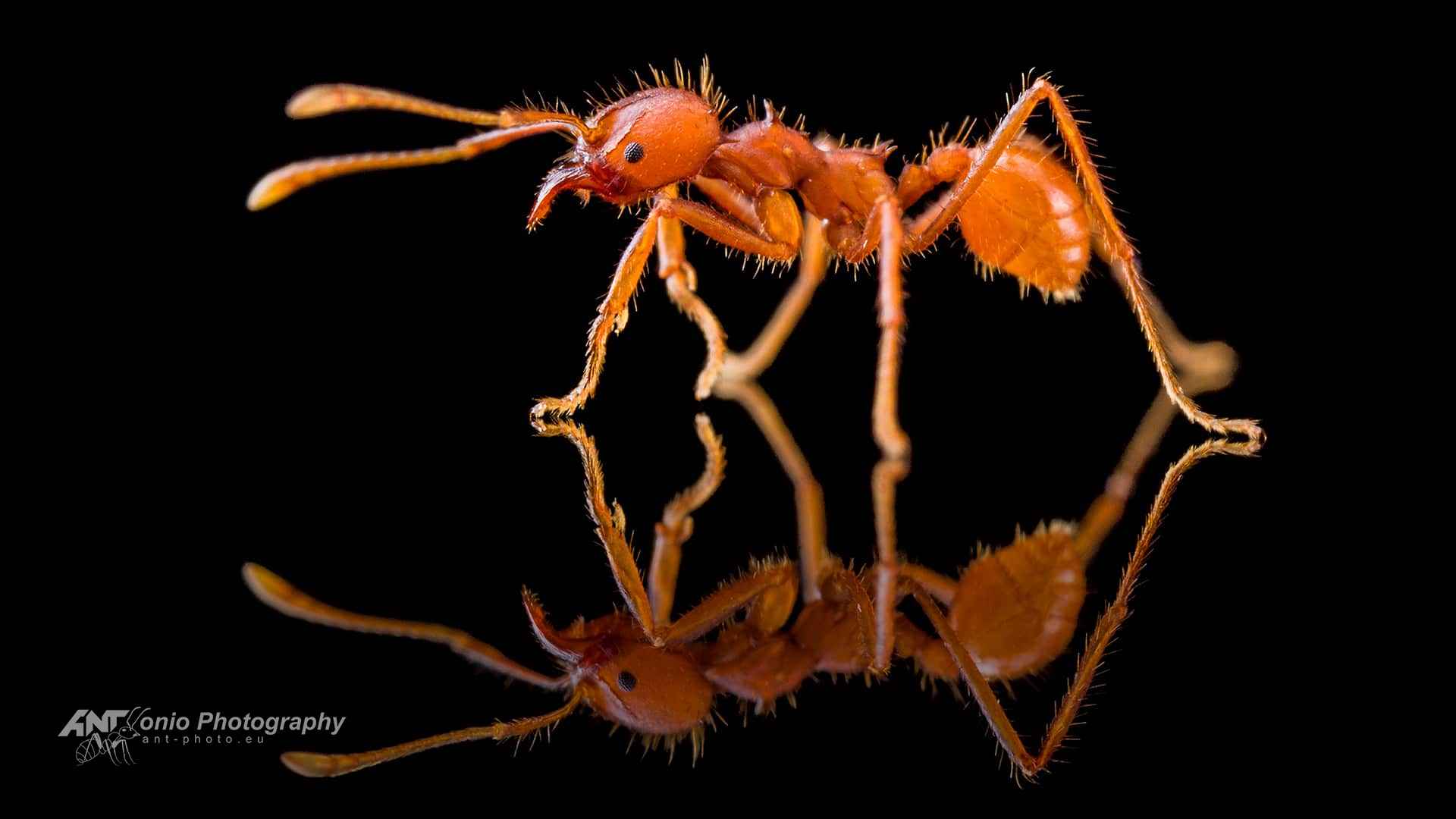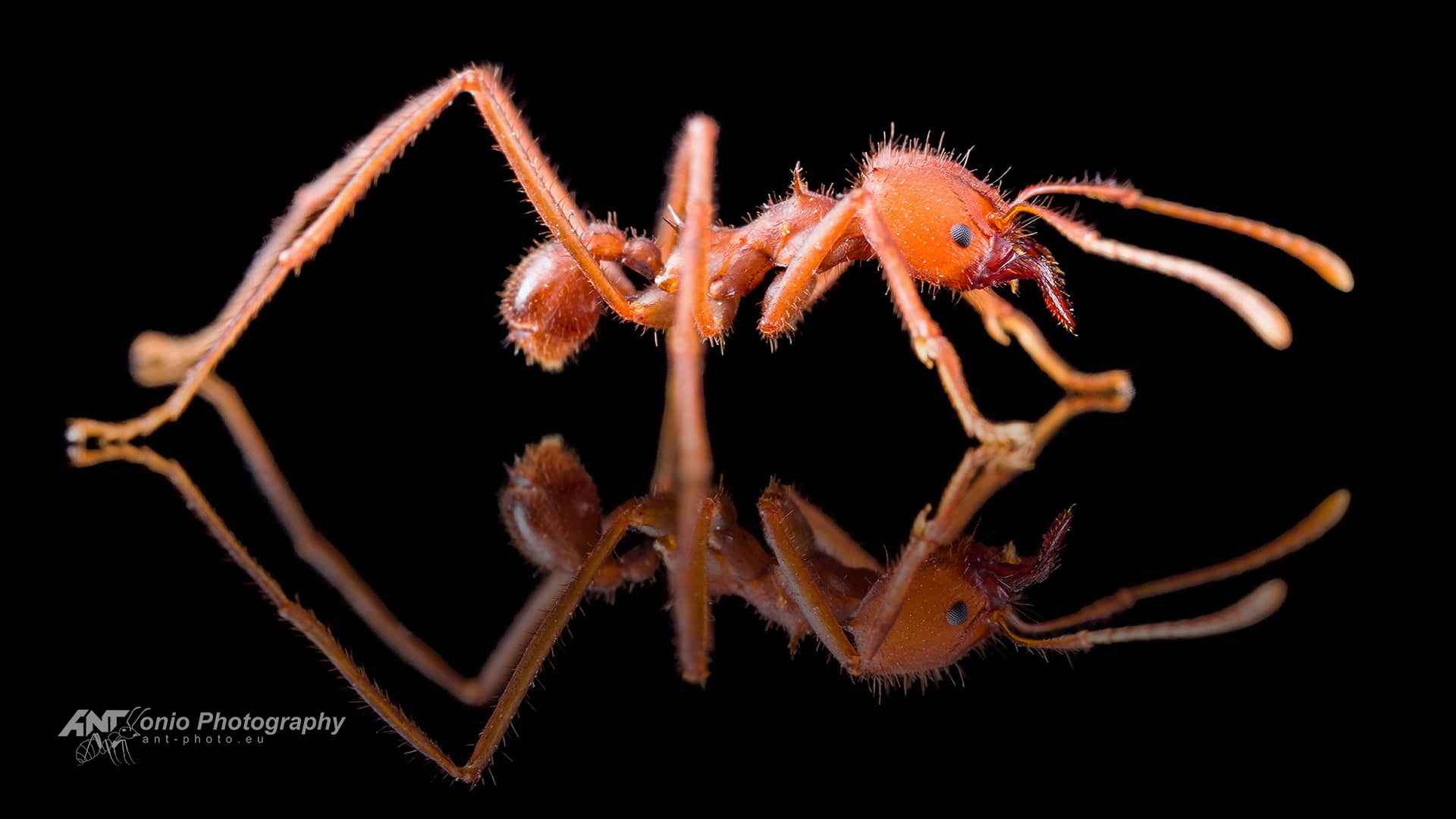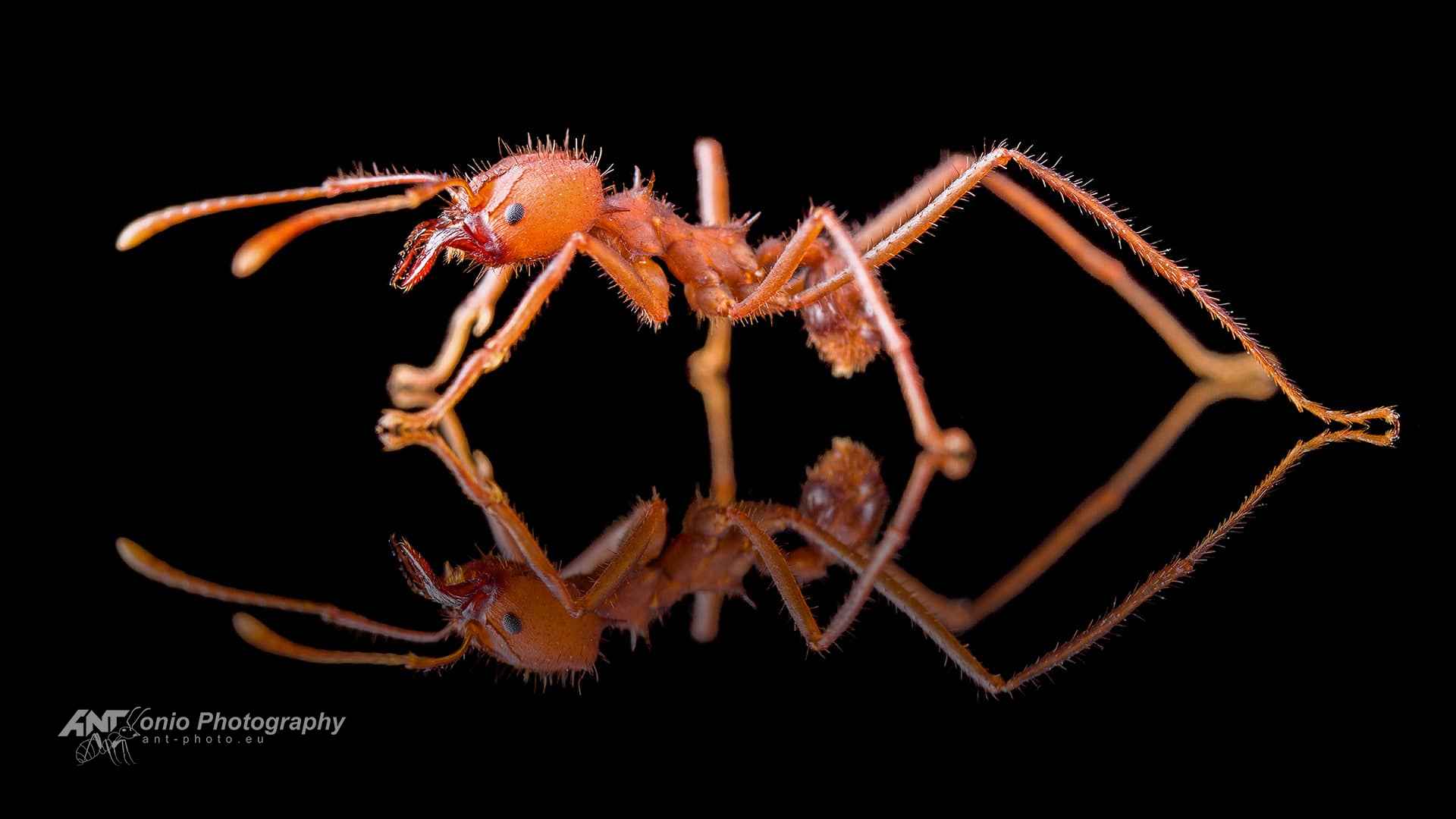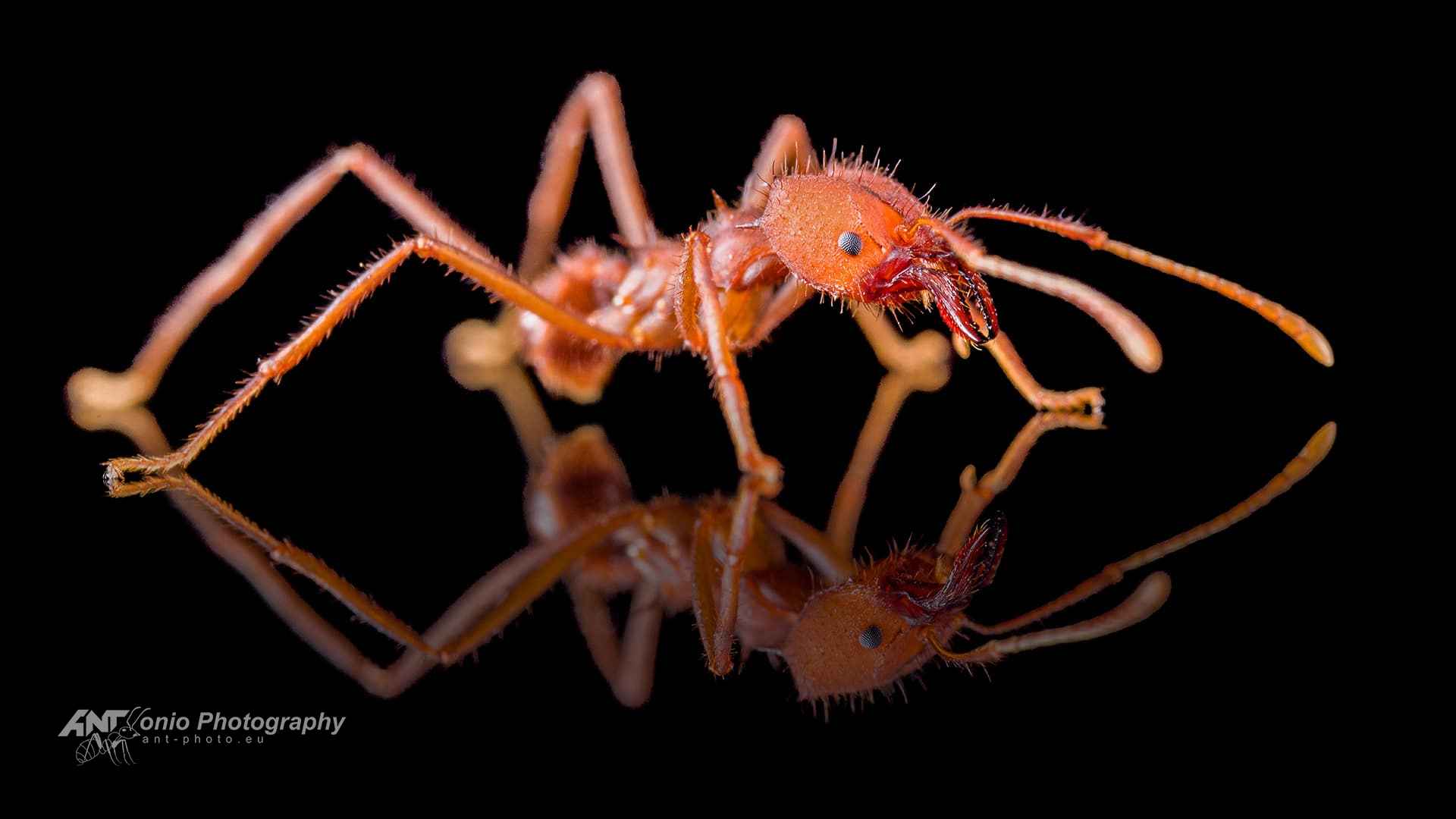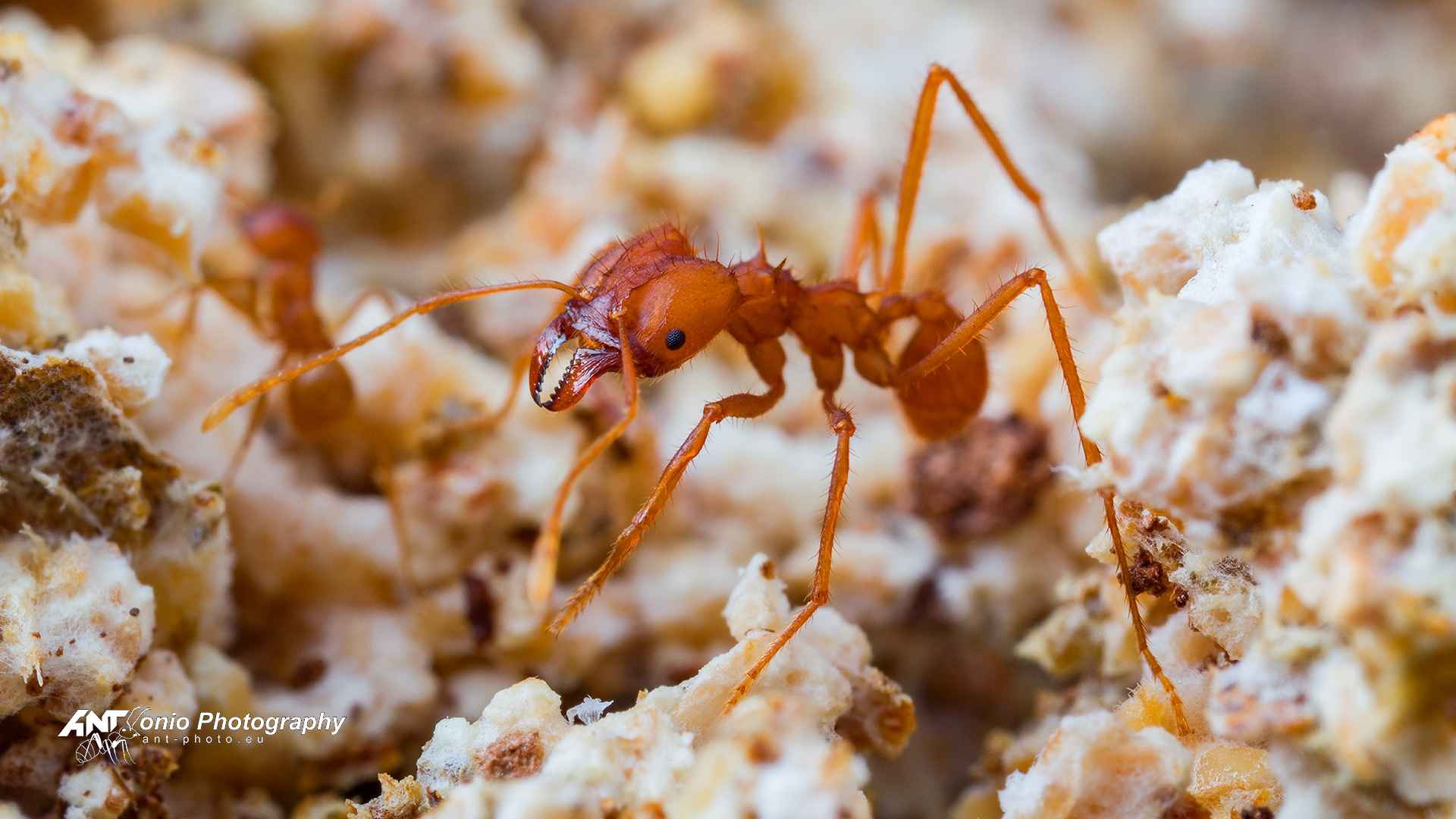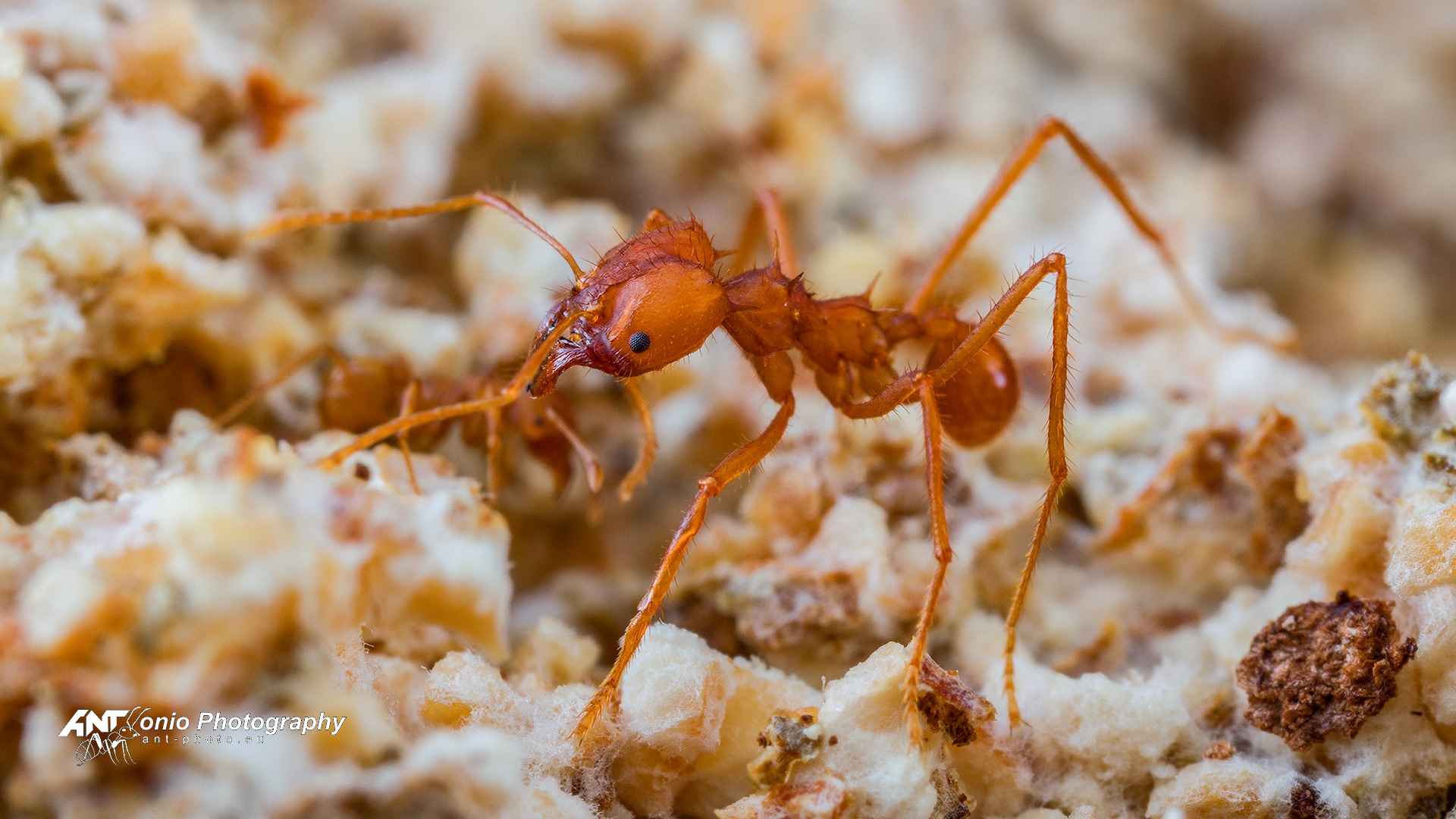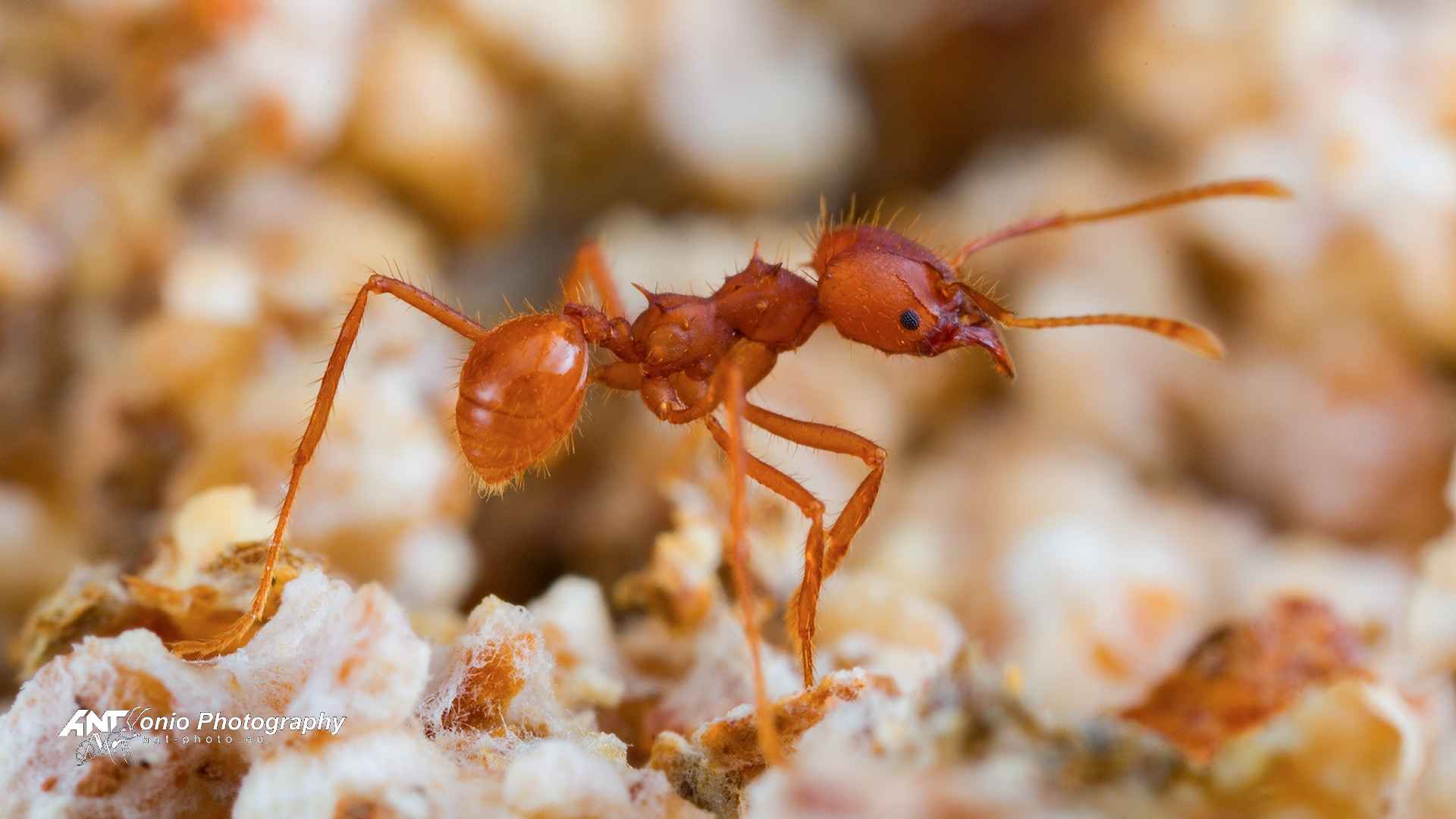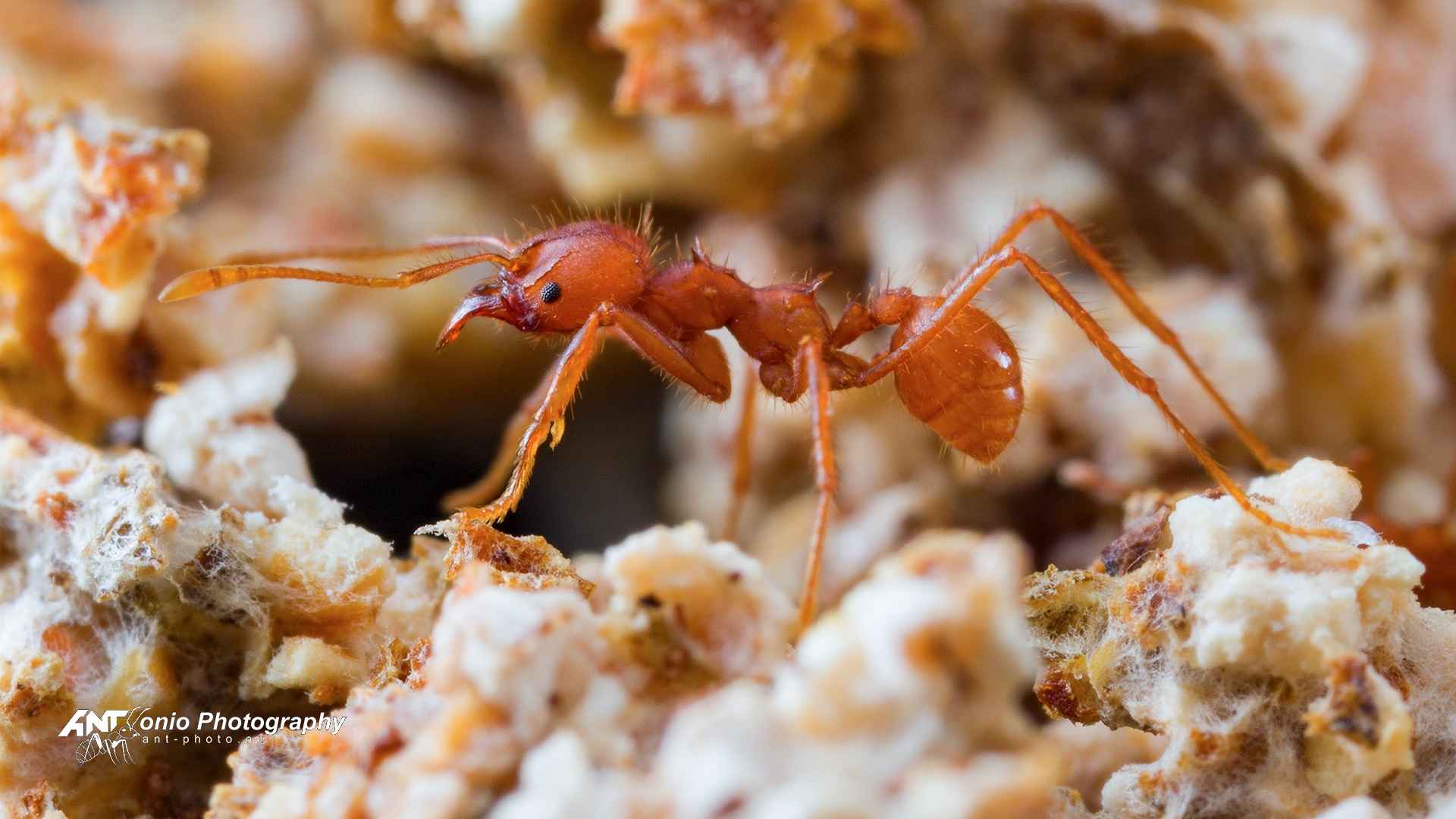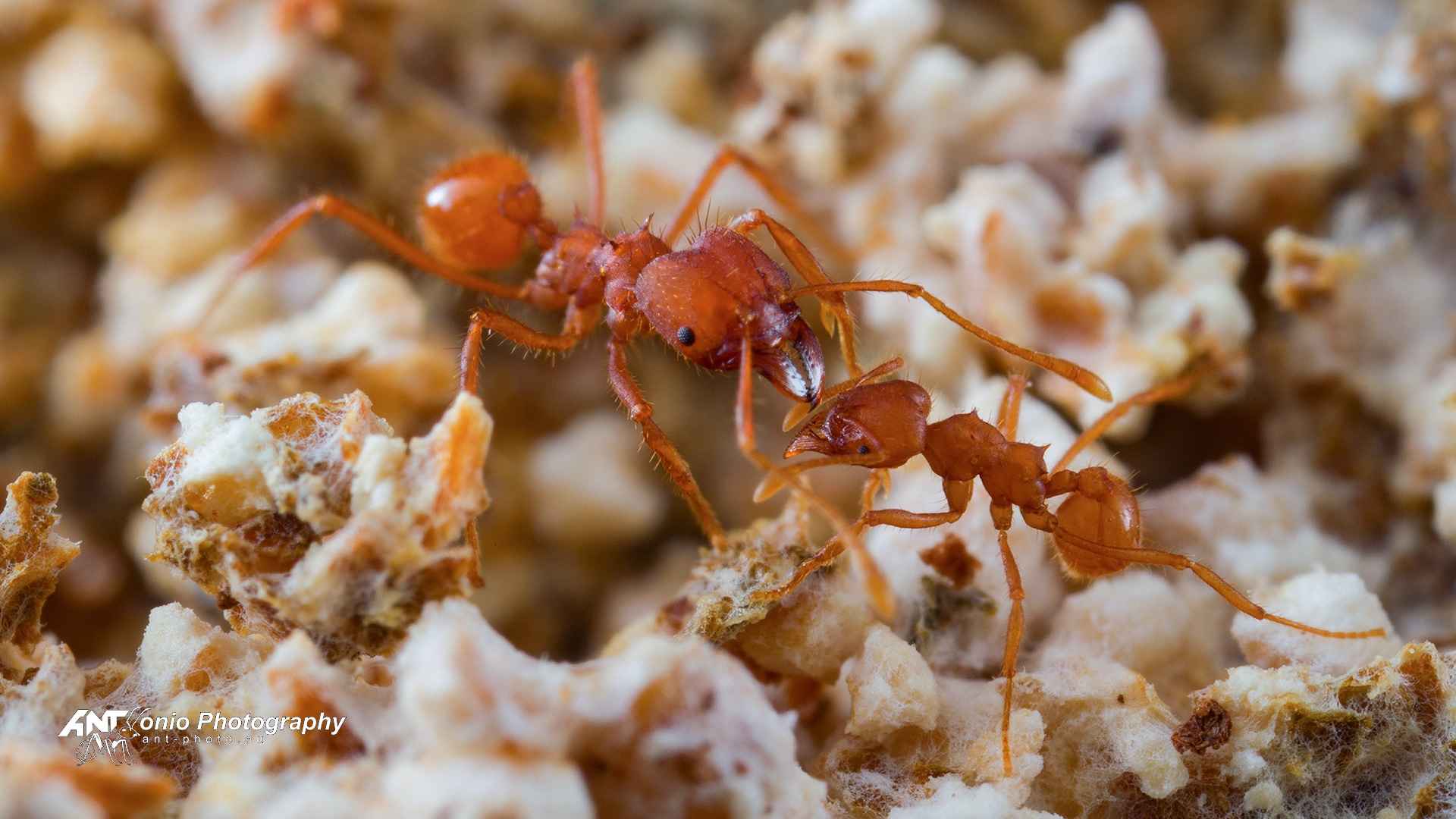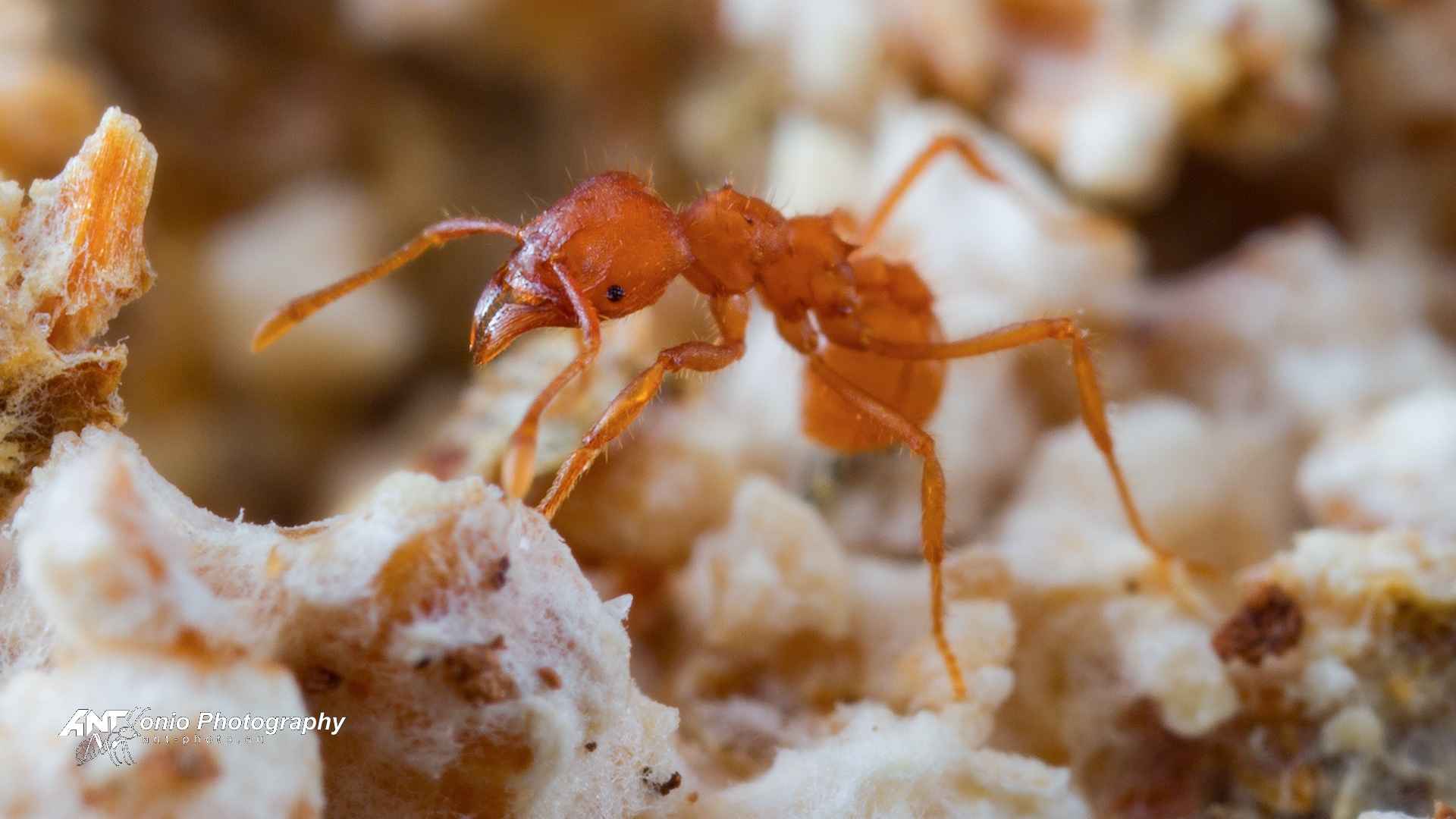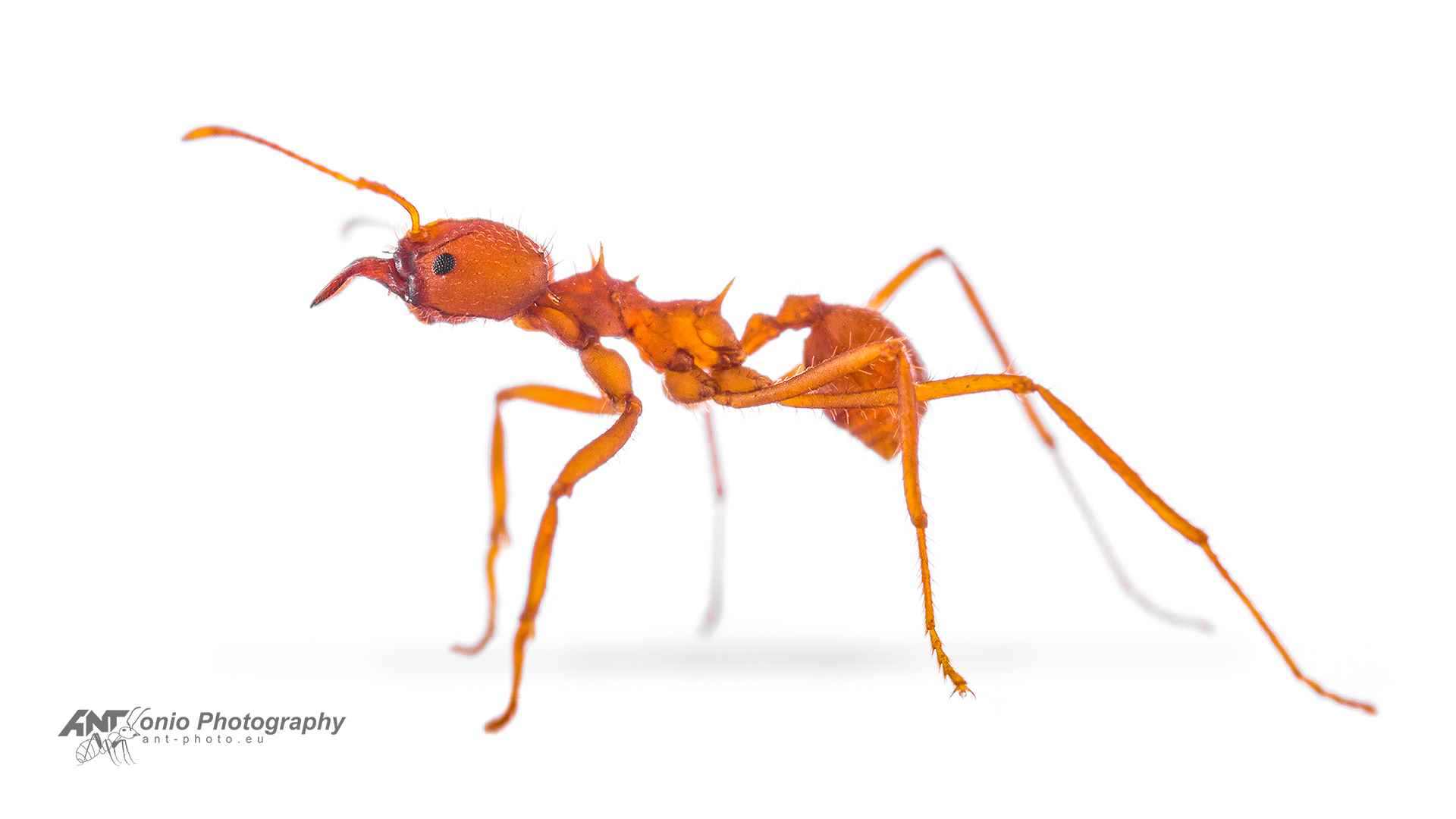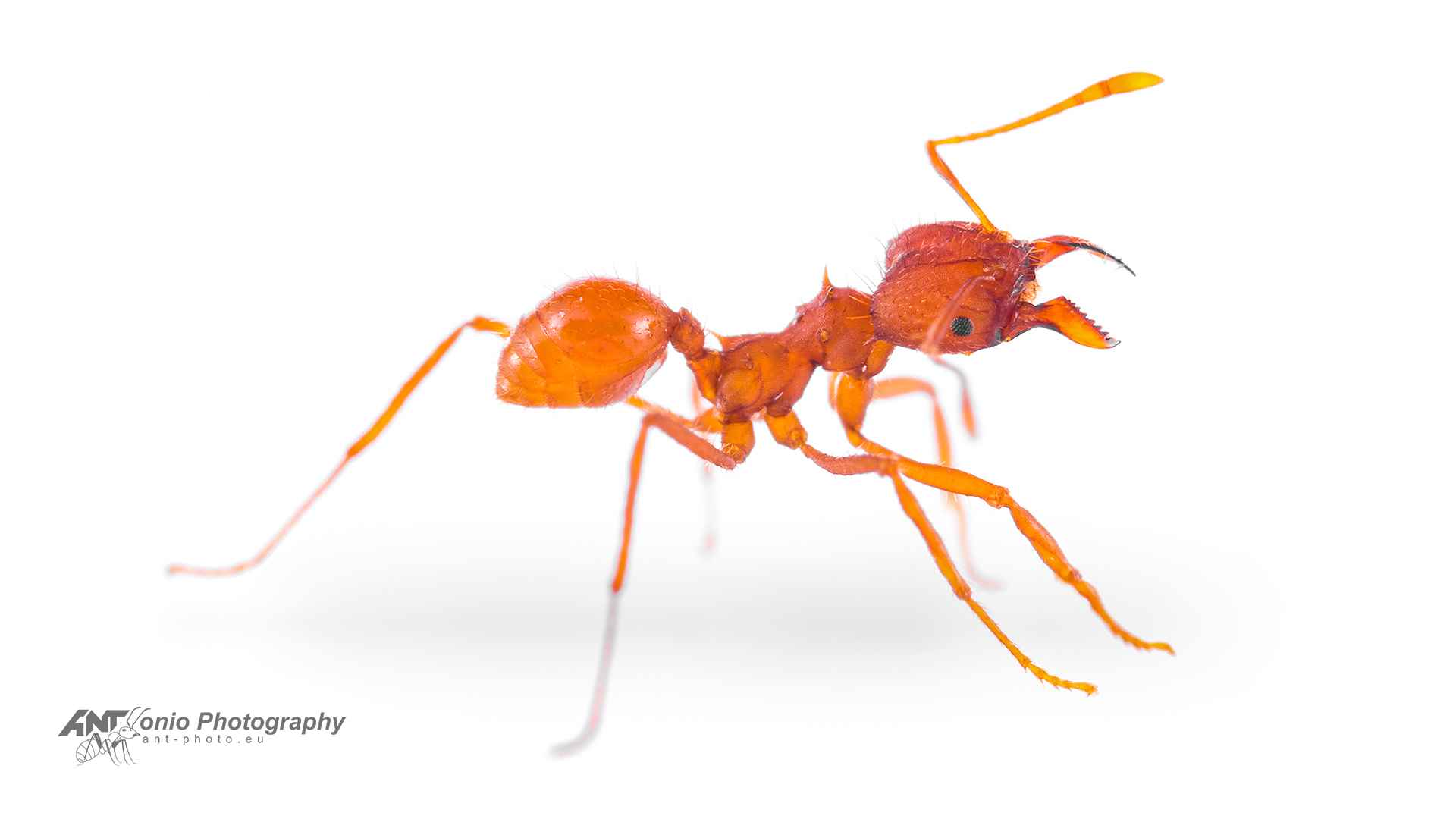Atta laevigata
Caribbean pine leaf cutting ant
| Rodzina | Family: | Formicidae |
| Podrodzina | Subfamily: | Myrmicinae |
| Plemię | Tribe: | Attini |
| Rodzaj | Genus: | Atta |
| Gatunek | Species: | A. laevigata |
Atta laevigata photo gallery
Opis / Description of Atta laevigata
![]() Mrówki mają z nami, ludźmi, więcej wspólnego, niż mogłoby się wydawać. Nie chodzi tu bynajmniej wyłącznie o socjalny tryb życia (który u mrówek jest daleko bardziej uorganizowany, niż u nas) – mowa o rolnictwie. My hodujemy bydło dla mięsa i mleka – mrówki hodują mszyce dla słodkiej spadzi. My uprawiamy zboża i inne rośliny, mrówki – grzyby.
Mrówki mają z nami, ludźmi, więcej wspólnego, niż mogłoby się wydawać. Nie chodzi tu bynajmniej wyłącznie o socjalny tryb życia (który u mrówek jest daleko bardziej uorganizowany, niż u nas) – mowa o rolnictwie. My hodujemy bydło dla mięsa i mleka – mrówki hodują mszyce dla słodkiej spadzi. My uprawiamy zboża i inne rośliny, mrówki – grzyby.
Jednym z gatunków, który hodowlę tę opanował do perfekcji jest Atta laevigata. Gatunek ten zamieszkuję Amerykę Południową – spotkać można go w Boliwii, Brazylii, Kolumbii, Gujanie, Gujanie Francuskiej, Paragwaju, Surinamie i Wenezueli.
Mrówki te, podobnie jak inne tzw. „grzybiarki”, zajmują się wycinaniem fragmentów roślin i znoszeniem niemałych ich ilości do gniazda. Sam materiał roślinny nie służy im jednak za pokarm – gromadzą go i przygotowują jako podłoże do wzrostu grzyba, który to stanowi ich jedyny pokarm. Podobnie jak inne grzybiarki, jest to gatunek wysoce polimorficzny, a więc charakteryzujący się różnorodnością wielkości i proporcji robotnic. Od najmniejszych, zajmujących się uprawą grzyba i wychowem potomstwa, przez te średnich rozmiarów, wykonujący większość pracy przy zbiorze roślin, aż po największe – broniące gniazda i obrabiające najtwardszy materiał roślinny.
Atta laevigata, będąca jednym z większych gatunków w swoim rodzaju, tworzy kolonie liczące nawet 3,5 miliona robotnic. Ze względu na swoje pokaźne rozmiary, królowe Atta laevigata są zbierane podczas lotu godowego i jedzone w wielu krajach swojego występowania. Potrawa z nich przyrządzana zwana jest „hormiga culona”.
![]() Ants have more in common with us, humans, than it seems. It is not just about the social lifestyle (which it ants’ case is way more organized, than in humans) – it is about agriculture. We breed cattle fot meat and milk – ants tend aphids for sweet honydew. We grow grains and other plants, ants grow fungus.
Ants have more in common with us, humans, than it seems. It is not just about the social lifestyle (which it ants’ case is way more organized, than in humans) – it is about agriculture. We breed cattle fot meat and milk – ants tend aphids for sweet honydew. We grow grains and other plants, ants grow fungus.
Atta laevigata is one of the species, which mastered this to perfection. This species lives in South America – it can be found in Bolivia, Brazil, Colombia, Guyana, French Guiana, Paraguay, Suriname and Venezuela.
This ants, like other, so called, leafcutter ants, cut down plant fragments and take them, usually in large amounts, to their nest. However, the plant material itself doesn’t serve as food for the ants – it is collected to be prepared as a substrate for the growth of the fungus, which is the ants’ only food. Like most leafcutters, Atta laevigata is highly polymorphic in size and proportions of the workers. The smaller ones cultivate the fungus and look after the brood, medium ones work mostly at harvesting and the biggest protect the nest and process the hardest plant material.
Atta laevigata is one of the biggest species in the genus, and create colonies of up to 3.5 million workers. Due to their exceptional size, Atta laevigata queens are harvested during their nuptial flight and eaten by people in some countries. The dish prepared with them is called „hormiga cullona”.



